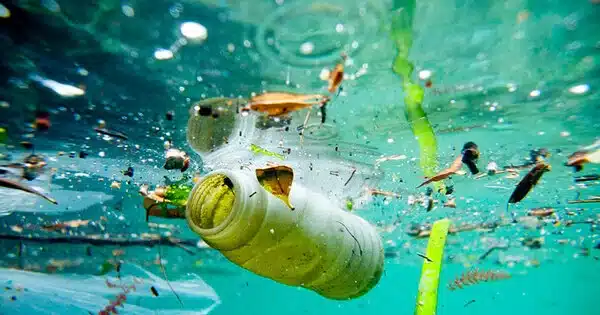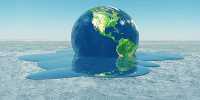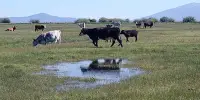Plastic pollution in the ocean is a type of marine pollution caused by plastics that range in size from large original materials such as bottles and bags to microplastics formed from plastic fragmentation. It is a serious and growing environmental issue that has received increased attention in recent years. Marine debris is primarily discarded human garbage that floats or is suspended in the ocean. Plastic accounts for 80% of marine debris. The accumulation of plastic waste in marine environments, such as seas, oceans, and coastlines, is referred to as litter.
Plastic pollution endangers marine ecosystems, wildlife, and human health. Microplastics and nanoplastics are the byproducts of plastic waste breakdown or photodegradation in surface waters, rivers, and oceans. Scientists recently discovered nanoplastics in heavy snow, specifically about 3,000 tons that cover Switzerland each year.
Here are some key points about plastic pollution in the ocean:
- Sources of Plastic Pollution: Plastic pollution in the ocean is primarily caused by poor waste management practices, littering, industrial discharges, and improper disposal of plastic products. Plastics used in single-use items such as bottles, bags, and packaging contribute significantly to the problem.
- Impact on Marine Life: Plastic debris is frequently mistaken for food by marine animals, causing blockages in their digestive systems or even death. Seabirds, turtles, dolphins, and whales are particularly vulnerable to this problem. Furthermore, plastic fragments can release toxic chemicals into the water, posing additional risks to marine life.
- Microplastics: Microplastics are tiny plastic particles less than 5mm in size. They can be the result of the breakdown of larger plastic items or can be deliberately manufactured for use in various products. These microplastics can be ingested by marine organisms and enter the food chain, potentially reaching humans who consume seafood.
- Ocean Gyres: Plastic pollution tends to accumulate in certain areas of the ocean due to circular ocean currents called gyres. The most well-known example is the Great Pacific Garbage Patch, located in the North Pacific Ocean, where large amounts of floating plastic debris have gathered.
Individuals can help reduce plastic pollution by practicing responsible waste disposal, reducing their use of single-use plastics, participating in beach clean-ups, and supporting eco-friendly businesses and policies. Scientists and entrepreneurs are developing new technologies and materials to combat plastic pollution. Biodegradable plastics, improved waste management systems, and ocean-cleaning technologies, for example, are being investigated as potential solutions.
Despite ongoing efforts, the problem of ocean plastic pollution remains complex and difficult. To mitigate its effects and ensure the preservation of marine ecosystems for future generations, a global effort is required.













